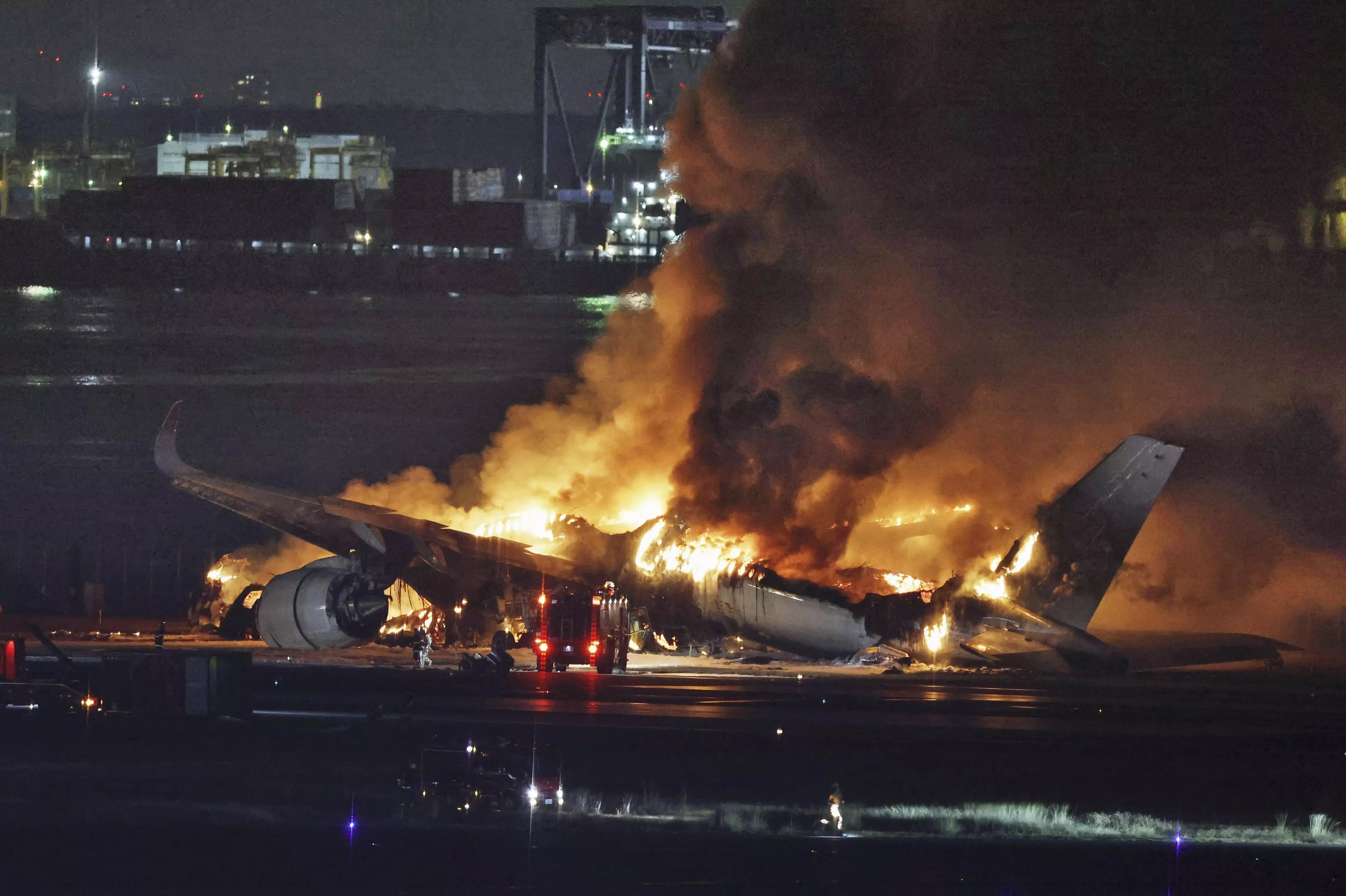
Explained: Why the jet in Japan plane crash didn’t explode upon impact
Critical factors such as fuel quantity, safety features, impact dynamics, and swift evacuation procedures may have played a key role in preventing an explosion

A big Japan Airlines passenger jet and a smaller Coast Guard plane crashed on the runway at Haneda Airport in Tokyo on Tuesday (December 2). The larger plane caught fire due to the impact. Sadly, five out of six people from the Coast Guard plane died, but all 379 passengers and crew from the airline's plane survived. What many have been wondering is how the plane avoided an explosion upon impact even though it caught fire, giving the crew enough time to evacuate the passengers. Here is what may have happened.
Details of the incident
Sequence: The collision happened right after the Japan Airlines plane JAL flight 516, an Airbus A350-900, landed at 5:46 pm. The captain, who got permission to land, could not see the smaller plane.
Investigation: Experts are puzzled because this kind of accident is unusual due to improved safety measures in the aviation industry.
Scary moments: Passengers experienced fear and confusion as smoke filled the cabin. Some panicked while others sought help for children.
Evacuation: The crew did a great job guiding people to safety. They quickly used emergency exits, and within 20 minutes, everyone was out of the plane.
Safety procedures: Passengers left their belongings behind, following safety advice to speed up the evacuation process.
So, why did the jet not explode on impact?
Material composition: The Airbus A350 extensively uses carbon fibre composites, making up about half of its structure. Compared to older planes, the A350 is far safer due to composites.
Purpose of composites: Engineers opt for these materials to reduce weight and enhance fuel efficiency, a shift from traditional metal-based constructions.
Critical structures: Major components like wings and the fuselage are primarily composed of these composite materials, though metals like aluminium, steel, and titanium still play a role, albeit smaller.
Fire-resistance measures: The interior components, including seats, are designed with materials that resist burning to ensure passenger safety in the case of a fire incident.
Impact dynamics: Sometimes a collision or impact may not immediately trigger an explosion, especially if certain critical components are not badly damaged or breached.
Limited fuel load: The limited amount of fuel the plane carried during landing might have lessened the fire's severity and potentially avoided an explosion, aerospace design expert Dr Sonya Brown told The Guardian.

